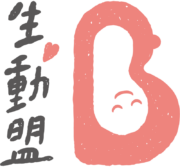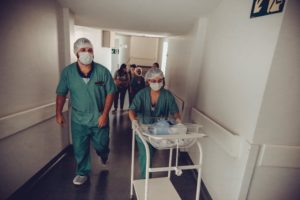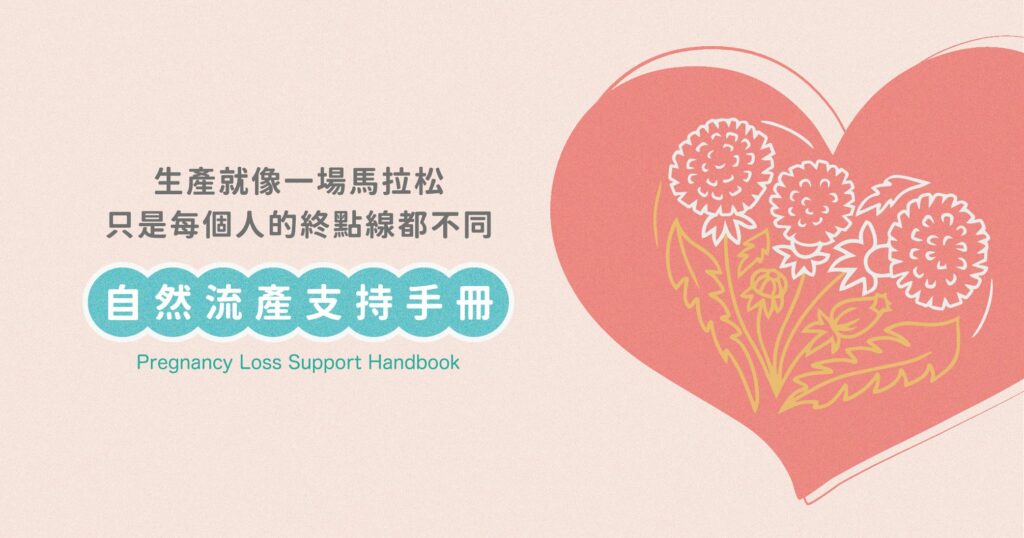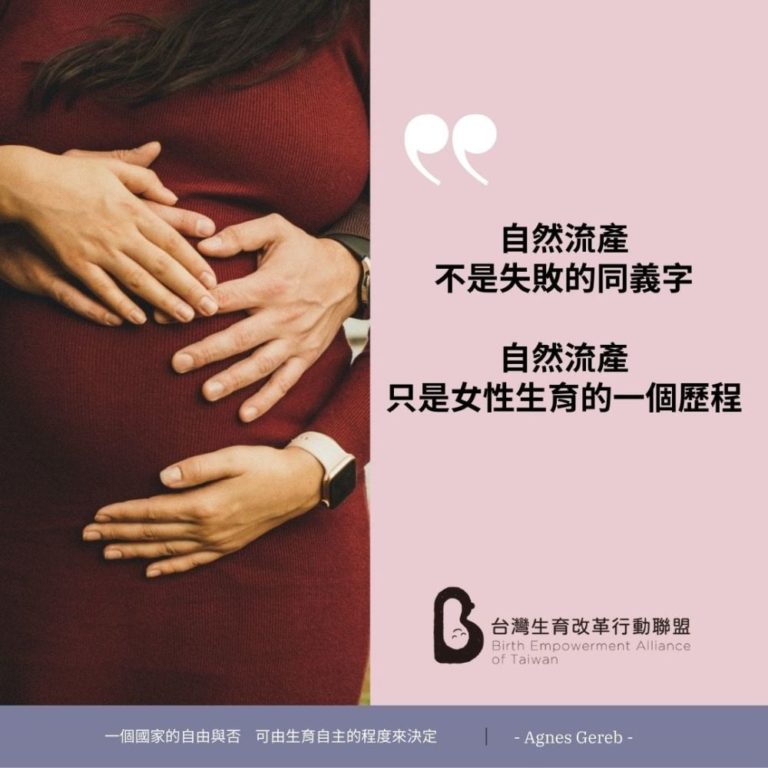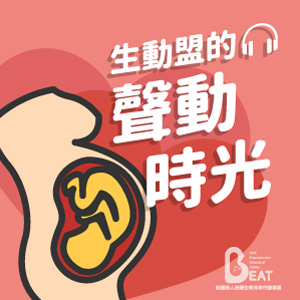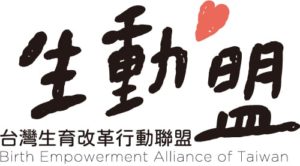5.1 當孕婦出現感染 COVID-19 的症狀需要住院時,她應該如何被照護?
建議
- Women presenting with a fever, should be cared for in line with RCOG Green-top Guideline No. 64a Bacterial Sepsis in Pregnancy.Testing for SARS-CoV-2 should be offered in addition to blood cultures.
出現發燒症狀的婦女,應按照英國皇家婦產科學會 (Royal College of Obstetricians and Gynaecologists, RCOG ) Green-top 指南第 64a 項:「懷孕時發生細菌性敗血症」的章節處理。除血液培養外,也應做SARS-CoV-2 的檢查。
- While pyrexia may suggest COVID-19, clinicians should not assume that all pyrexia is because of COVID-19.The possibility of bacterial infection should be considered and a full sepsis screen performed in line with the UK Sepsis Trust Sepsis Screening and Action Tool and intravenous (IV) antibiotics administered when appropriate.
雖然發燒可能是感染到 COVID-19,但臨床醫師不應直接假設所有發燒都由 COVID-19 所引起的。應考慮細菌性感染的可能性,並根據英國敗血症協會( UK Sepsis Trust) 的篩檢與行動工具的建議,必須適當的使用靜脈注射 (IV) 給予抗生素。
- Bacterial (rather than viral) infection should be considered if the white blood cell count is raised (lymphocytes are usually normal or low with COVID-19) and antibiotics should be commenced.
如果白血球數量上升時,應考慮細菌感染,而非病毒感染,並開始使用抗生素。感染 COVID-19 時則通常是淋巴細胞的數量正常或偏低。
- Radiographic investigations should be performed as for the non-pregnant adult; this includes chest X-ray and computerised tomography (CT) of the chest.
像未懷孕的一般成年人一樣進行影像檢查:包括胸部 X 光檢查和胸部電腦斷層掃描 (CT)。- Chest imaging is essential for the evaluation of the unwell woman with COVID-19 and should be performed when indicated, and not delayed because of concerns of possible maternal and fetal exposure to radiation, as maternal wellbeing is paramount.
胸部影像檢查對感染 COVID-19身體不適的女性是相當重要的評估,一旦有症狀就須進行檢查,不需要過度擔心孕婦和胎兒會暴露在輻射而延遲檢查,孕婦的健康為首要考量。
- Chest imaging is essential for the evaluation of the unwell woman with COVID-19 and should be performed when indicated, and not delayed because of concerns of possible maternal and fetal exposure to radiation, as maternal wellbeing is paramount.
- A diagnosis of pulmonary embolism or heart failure should be considered for women presenting with chest pain, worsening hypoxia or a respiratory rate above 20 breaths/minute (particularly if there is a sudden increase in oxygen requirements), or in women whose breathlessness persists or worsens after expected recovery from COVID-19.
當出現胸痛、缺氧或呼吸頻率每分鐘超過 20 次時(特別是如果氧氣需求突然增加情況下)、或是感染COVID-19 復原後,持續出現呼吸困難的女性,應考慮肺栓塞或心衰竭的診斷。
- Additional tests to investigate for possible differential diagnoses, including electrocardiogram, echocardiogram, CT pulmonary angiogram, ventilation perfusion lung scan, should be considered.
為了調查是否有其他的診斷,必要時會進行其他檢查,這些檢查包括心電圖、心臟超音波、肺血管電腦斷層、肺部灌流/通氣核子醫學掃描等。
指引的實證與正當性的總結
The clinical symptoms of COVID-19 overlap with those of a variety of other clinical conditions. Healthcare providers should consider all differential diagnoses for women who present with a fever in pregnancy and follow the advice and guidance of the RCOG Green- top Guideline No. 64a.
感染 COVID-19 的臨床症狀與許多其他疾病的臨床症狀有重疊及相似的情況。醫療人員應考慮對懷孕期間發燒的女性進行所有鑑別診斷,並遵循 RCOG Green top 指南第 64a 項的建議和指引。
Several studies have shown decreased lymphocyte counts in the general population affected by COVID-19. One systematic review noted decreased lymphocyte counts in pregnant women.
多項研究顯示許多感染 COVID-19 的一般人,淋巴細胞的數量會下降。一項系統性回顧研究也提到孕婦淋巴細胞減少的現象。
5.2 如何照顧疑似或確診 COVID-19 且臨床症狀惡化的孕婦或近期懷孕的婦女?
建議
照護的機構與原則
- Obstetricians should be familiar with and follow local guidelines for the initial investigation and care of women presenting with possible COVID-19.
產科醫生應熟悉並遵循當地衛生機關的指引,對可能感染 COVID-19 的婦女進行初步調查和照護。
- Women with suspected COVID-19 should be treated as though it is confirmed until test results are available.
疑似感染 COVID-19 的婦女在獲得 PCR 檢測結果之前,應被視為已確診者來處理。
- The priority for medical care should be to stabilise the woman’s condition with standard therapies.
醫療處置的重點應該放在用標準化的治療來穩定婦女的狀況。
- An urgent MDT meeting should be arranged for any unwell woman with suspected or confirmed COVID-19. This includes women who are requiring oxygen to maintain saturations between 94% and 98%, women with a respiratory rate above 20 breaths/ minute and women with a heart rate greater than 110 beats/minute.This should ideally involve senior decision makers and may include: a consultant obstetrician, consultant anaesthetist, midwife-in-charge, consultant neonatologist, neonatal nurse-in-charge, intensivist responsible for obstetric care, an obstetric physician, a respiratory physician and the infection control team.The discussion should be shared with the woman, and her family if she chooses.The following should be considered:
應該為疑似或確診 COVID-19 加上任何身體不適的婦女安排緊急的跨領域專家會議。包括需要吸氧氣才能維持血氧飽和度在 94% 至 98% 之間、呼吸頻率每分鐘高於 20 次和心跳速率每分鐘大於 110 次的情形。理想情況下,此跨領域專家會議中必須有醫院的高階決策者,其他可邀請例如:資深產科醫生、資深麻醉醫師、助產單位的主管、資深新生兒科醫師、新生兒主護、負責產科護理的重症醫師、產科醫師、呼吸科醫師和感染控制組。如果婦女願意的情況下,應該與婦女及家人共同分享醫療決策的過程。應考慮以下幾點:- Key priorities for medical care of the woman and her baby, and her birth preferences.
婦女和寶寶醫療處置的主要優先順序以及婦女生育時的喜好。
- The most appropriate location of care (e.g. intensive care unit, ‘COVID bays’, specific COVID-19 wards, isolation room in infectious disease ward or other suitable isolation room) and lead specialty.
最合適進行照護服務的地點(例如重症加護病房、COVID 隔離室、特定的 COVID-19 病房、傳染病病房的隔離室或其他合適的隔離室)以及收入院的醫療專科。
- Concerns among the team regarding special considerations in pregnancy, including the health of the baby.
團隊之間對懷孕期間的特殊狀況考量,包含寶寶的健康。
- Key priorities for medical care of the woman and her baby, and her birth preferences.
- A consultant in obstetrics and gynaecology should review all pregnant and recently pregnant women with suspected or confirmed COVID-19 who are in hospital at least daily, even if they are not admitted to the maternity unit.
婦產科醫師應對所有疑似或確診 COVID-19 的孕婦和最近懷孕的孕婦做諮詢,即使她們並未入住產科病房,資深婦產科醫師也應該每天主動查一次房。
- If appropriate, a designated team member should be responsible for regularly updating the woman’s family about her health, and that of the baby.
如果適合的話,團隊中的指定成員應負責定期向婦女的家屬通報她和嬰兒的健康狀況。
觀察和檢查
- Clinicians should monitor both the absolute values and trends of the hourly observations, including heart rate, respiratory rate and oxygen saturation.
臨床醫療人員應每小時監測心跳速率、呼吸頻率和血氧飽和度的數值和趨勢。
- Clinicians should be aware that young, fit women can compensate for deterioration in respiratory function and are able to maintain normal oxygen saturations until sudden decompensation.
臨床醫療人員應該警覺年輕、健康的女性可能可以補償呼吸功能變差的情境,直到突然失去代償能力前,都會維持正常的血氧飽和度。
- Units should have an escalation plan for the care of pregnant and postnatal women with COVID-19.
醫療單位應針對感染 COVID-19 的孕婦和產後婦女,制定升級版的護理計劃。
- The woman’s care should be escalated urgently if any of the following signs of decompensation develop:
如果出現以下任何失去代償能力的現象,應立即提升該婦女的監測和照護層級:- increasing oxygen requirements or fraction of inspired oxygen (FiO2) above 35%,
氧氣需求量增加或吸入氧含量 (FiO2) 在35% 以上,
- increasing respiratory rate despite oxygen therapy of or above 25 breaths/ minutes or a rapidly rising respiratory rate,
即便已經給氧,但呼吸頻率仍然增加,或是呼吸頻率超過每分鐘 25 次。
- reduction in urine output when this is being monitored,
監測時尿量減少
- acute kidney injury (serum creatinine levels above 77 μmol/l in women with nopre-existing renal disease),
急性腎衰竭(該女性沒有腎臟疾病的病史,但血清中肌酸酐 Creatinine 濃度高於 77 µmol/l)
- drowsiness, even if the oxygen saturations are normal.
嗜睡,即使血氧飽和度正常。
- increasing oxygen requirements or fraction of inspired oxygen (FiO2) above 35%,
- The possibility of myocardial injury should be considered, as the symptoms are similar to those of respiratory complications of COVID-19.
應考慮心肌受損的可能性,即使症狀與 COVID-19 的呼吸系統併發症相似。
- The frequency and suitability of fetal heart rate monitoring should be considered on an individual basis, accounting for the gestational age and the maternal condition.
胎心率監測的頻率和適用性,需應個體情況進行考慮,考慮時請同時考量胎兒和母體狀況。
醫療介入
- If there is clinical uncertainty about whether to offer a therapy to a pregnant woman, advice should be sought through maternal medicine networks.
如果臨床上對孕產婦是否提供特定治療存在不確定性,務必透過孕產醫學專業社群尋求建議。
- Oxygen should be titrated to target saturations to 94–98%.
給予氧氣的目標值為達到血氧飽和度為 94–98%。
- Caution should be applied to IV fluid management:
應小心給予靜脈輸液:- Hourly fluid input/output char ts should be used to monitor fluid balance in women with moderate to severe symptoms of COVID-19.
中、重度 COVID-19 確診女性患者應使用每小時液體輸入/輸出的圖表來監測體液平衡情形。
- The aim should be to maintain a neutral fluid balance in labour.
目標是在分娩時保持體液平衡。
- When required, boluses in volumes of 250–500 ml should be employed and an assessment for fluid overload made before proceeding with further fluid resuscitation.
必要時,可以給予 250-500 毫升的輸液,並在給予更多液體之前,要記得評估輸液是否過多。
- Hourly fluid input/output char ts should be used to monitor fluid balance in women with moderate to severe symptoms of COVID-19.
- Antibiotics should be commenced at presentation if there is clinical suspicion of bacterial infection or sepsis, with an early review and rationalisation of antibiotics if COVID-19 is confirmed. Even when COVID-19 is confirmed, clinicians should remain open to the possibility of another coexisting condition.
如果臨床懷疑有細菌感染或敗血症情形,應在到院的時候就開始使用抗生素。即便確診為 COVID-19,也應儘早檢查並給予適當的抗生素。也就是說即使 COVID-19 確診,臨床醫生也應該意識到,存在其他細菌性感染疾病的可能性。- There should be no delay in the administration of therapy that would usually be given in maternity care (e.g. IV antibiotics in woman with fever and prolonged rupture of membranes).
例行的產科照護,應該照常進行,不應延遲(例如,為發燒和破水過久的孕產婦靜脈注射抗生素)。
- There should be no delay in the administration of therapy that would usually be given in maternity care (e.g. IV antibiotics in woman with fever and prolonged rupture of membranes).
- All pregnant women should be assessed for risk of VTE and prescribed thromboprophylaxis with LMWH unless there is a contraindication (see section 3.1). The dose of LMWH should be considered on an individual basis and discussed with the MDT.Therapeutic doses of LMWH should be employed whenVTE is suspected until objective testing can be undertaken.
除非有特殊禁忌症,否則所有孕婦都應評估靜脈栓塞(VTE, venous thromboembolism) 的風險,並使用低分子量肝素 ( low molecular weight heparin, LMWH) 進行血栓預防(請參考第 3.1 節),除非有禁忌症。低分子量肝素 (LMWH) 的劑量應根據個人情況考慮並在跨學科討論會上進行討論。當懷疑可能是靜脈栓塞,就應使用治療劑量的低分子量肝素 (LMWH),直到進行其他客觀的檢驗為止。
- Thrombocytopenia may be associated with severe COVID-19. For women with thrombocytopenia (platelets less than 50 × 109/l) aspirin and LMWH thromboprophylaxis should be discontinued and haematology advice sought.
血小板低下可能與嚴重的 COVID-19 感染有關。對於血小板低下(血小板低於 50 × 109 /L)的婦女,應停止服用阿斯匹林和低分子量肝素 (LMWH) 等血栓溶解藥物,並尋求血液科的建議。
- The use of mechanical aids (such as intermittent pneumatic compression) should be used if LMWH therapy is contraindicated or paused secondary to thrombocytopenia.
如果有低分子量肝素 (LMWH) 治療上的禁忌或續發性的血小板低下,則應使用機械輔助工具治療靜脈栓塞(例如間歇性氣動加壓治療(IPC))。
- Corticosteroid therapy should be considered for 10 days or up to discharge, whichever is sooner, for women who are unwell with COVID-19 and requiring oxygen supplementation or ventilatory support. One suggested steroid regimen is:
對於 COVID-19 確診且需要給予氧氣甚至呼吸器治療的婦女,應考慮使用皮質類固醇治療 10 天,甚至直至出院。建議的類固醇給法是:- If steroids are not indicated for fetal lung maturity, oral prednisolone 40 mg once a day, or IV hydrocortisone 80 mg twice daily, for 10 days or until discharge, whichever is sooner.
如果不是用於促進胎兒肺部成熟的類固醇,則每天口服一次 Prednisolone 40 mg,或每天靜脈注射兩次Hydrocortisone 80 mg,持續 10 天或直至出院,以較早者為準。
- If steroids are indicated for fetal lung maturity, intramuscular dexamethasone 6 mg every 12 hours for four doses, then oral prednisolone 40 mg once a day, or IV hydrocortisone 80 mg twice daily, to complete a total of 10 days or until discharge, whichever is sooner.
如果是用於促進胎兒肺部成熟的類固醇,每 12 小時肌肉注射Dexamethasone 6 mg 共注射四劑,然後每天口服一次Prednisolone 40 mg,或每天靜脈注射兩次Hydrocortisone 80 mg,持續 10 天或直至出院,以較早者為準。
- If steroids are not indicated for fetal lung maturity, oral prednisolone 40 mg once a day, or IV hydrocortisone 80 mg twice daily, for 10 days or until discharge, whichever is sooner.
- Remdesivir should be avoided in pregnant women with COVID-19 unless clinicians believe the benefits of treatment outweigh the risks to the individual. Any decision to treat with remdesivir should be taken by an MDT that includes obstetric and infection specialists. Clinicians should be aware that the fetal risk profile of remdesivir is largely unknown.
應避免對感染 COVID-19 的孕婦使用瑞德西韋 (Remdesivir),除非臨床醫生認為治療的益處大於個體風險。使用 Remdesivir 治療的任何決定都應由產科和感染科專家在內的跨學科討論會上做出決定。臨床醫生應該了解,Remdesivir 對胎兒的許多風險,目前還有許多未知之處。
- When considering the use of remdesivir in women with COVID-19 who are breastfeeding, clinicians should consider the benefits and risks of treatment, and use only in women where benefit has been repor ted (hospitalised patients requiring oxygen therapy, especially early in disease course, and not in patients who are mechanically ventilated). Any decision to treat with remdesivir should be taken by an MDT that includes obstetric and infection specialists.
考慮哺餵母乳的 COVID-19 婦女使用Remdesivir 時,臨床醫生應考慮治療的益處和風險,並且僅用於目前認為有臨床意義的對象(需要氧氣治療的住院患者,特別是發病前期,並不適用已經使用呼吸器的患者)。任何使用 Remdesivir 治療的決定都應由包括產科和感染專科醫師在內的跨學科討論會中做出。
- The interleukin-6 receptor antagonist (anti-IL6) tocilizumab has been shown to improve outcomes, including survival, in hospitalised patients with hypoxia (oxygen saturation below 92% on air or requiring oxygen therapy) and evidence of systemic inflammation (C-reactive protein at or above 75 mg/l). Although data for the use of tocilizumab in pregnancy in this situation are limited, there is currently no compelling evidence that tocilizumab is teratogenic or fetotoxic. For women meeting the criteria above (hypoxic with systemic inflammation), the use of tocilizumab should be considered. It is recommended that any decision to treat with anti-IL6 agents should be taken by an MDT to include obstetric and infection specialists, and given if the benefits outweigh the risks.
白細胞介素 (IL-6) 接受器拮抗劑 Tocilizumab 已經被證明可以改善患者的預後,包括存活率、住院患者缺氧程度(在大氣中血氧飽和度低於 92% 或需要氧氣治療)和全身性發炎的現象(C 反應蛋白,CRP 濃度等於或高於 75 mg/L)。儘管現在於懷孕期間使用Tocilizumab 的資料有限,但目前暫時沒有確切證據認為 Tocilizumab 具有致畸胎性或對胎兒有毒性。對於具備上述條件的婦女(全身性發炎合併缺氧),應考慮使用 Tocilizumab。任何決定使用 白細胞介素 (IL-6) 接受器拮抗劑藥物治療的決定都應由跨學科討論會上做出決定,該討論會必須包括產科醫師和感染科醫師,只在臨床意義大於風險時給予此藥物治療。
- Other therapies are being investigated for the management of COVID-19, and pregnant women should be offered the opportunity to enrol in clinical trials (such as the RECOVERY trial) for which they are eligible. Hydroxychloroquine, lopinavir- ritonavir and azithromycin have been shown to be ineffective in treating COVID-19 infection and should not be used for this purpose.
目前還有其他治療 COVID-19 的實驗性療法,懷孕婦女應有參與臨床試驗的資格(如 RECOVERY Trial)。Hydroxychloroquine,lopinavirritonavir 和 azithromycin 都已經被證實對治療 COVID-19 的感染無效,不應用來治療 COVID-19 感染。
為寶寶的出生做計劃
- For pregnant women in the third trimester who are unwell, an individualised assessment should be undertaken by the MDT to decide whether emergency caesarean birth or IOL should be prioritised, either to facilitate maternal resuscitation (including the need for prone positioning) or because of concerns regarding fetal health.
對於進入第三孕期、身體不適的婦女,跨學科討論會應進行個別性評估,決定是否優先考慮緊急剖腹產或催產,以改善孕產婦的復甦狀況(例如俯臥擺位的需求)或因為考量胎兒健康狀況。
- If maternal stabilisation is required before delivery can be undertaken safely, this is the priority, as it is in other maternity emergencies.
孕產婦的狀況要先能夠穩定下來,才能安全進行分娩。這是最優先事項,就如同孕產婦在其他緊急情況下的處理原則一樣。
- If urgent intervention for birth is indicated for fetal reasons, then birth should be expedited as for usual obstetric indications, as long as the maternal condition is stable.
如果因為胎兒的原因,需要緊急分娩,只要產婦狀況穩定,可以向其他緊急狀況一樣,加快分娩的速度。
- When iatrogenic preterm birth is required, the administration of antenatal corticosteroids to promote fetal lung maturation and magnesium sulfate for fetal neuroprotection, should be considered by the MDT. Urgent intervention for birth should not be delayed for their administration.
當情況是醫源性早產時(指在懷孕37週前未足月時,醫師發現孕婦或胎兒出現影響妊娠的併發症,必須要終止妊娠,以確保母嬰安全),跨學科討論會應考慮在產前使用類固醇促進胎兒肺部成熟,使用硫酸鎂保護胎兒神經。生產緊急的處置不應被延遲。
指引的實證與正當性的總結
A useful summary on supportive care for adults diagnosed with COVID-19 has been published by WHO. Specific guidance on the care of patients with COVID-19 who are admitted to critical care has been published by NICE and SIGN.
目前世界衛生組織已發布,有關 COVID-19 確診成人支持療法的摘要。也有針對重症 COVID-19 確診患者,如何進行處置的具體指引, 已經發表在英國國家健康與照顧卓越研究院(The National Institute for Health and Care. Excellence, NICE)- 和 蘇格蘭學院間指引網絡(Scottish Intercollegiate Guidelines Network , SIGN)。
Hospitals should have escalation guidelines for the care of pregnant and postnatal women with COVID-19. An example of a maternity escalation plan from Guy’s and St Thomas’ NHS Foundation Trust is given in Appendix VI.
醫院應針對 COVID-19 的確診孕婦和產後婦女制定升級版的照護指引。一份婦女照護計畫升級版案例來自中 蓋伊與聖湯姆斯的國家醫療服務體系基金會信託(Guy’s and St Thomas’ NHS Foundation Trust) 請見附錄 VI。
As discussed in section 3.1, infection with SARS-CoV-2 requiring admission to hospital is associated with an increased risk of VTE. All pregnant and recently pregnant women should be assessed for risk of VTE and prescribed thromboprophylaxis with LMWH unless there is a contraindication. The dose of LMWH should be considered on an individual basis and discussed with the MDT. There is currently not enough evidence of the benefits and risks of therapeutic dose anticoagulation applicable to pregnant women who may require imminent operative birth, to recommend therapeutic anticoagulation routinely in the absence of suspected or proven VTE.
如同在第 3.1 節所討論的,感染 SARS-CoV-2 需要住院,因為與靜脈血栓風險增加有關。除非有相關禁忌症,否則所有懷孕和最近懷孕的婦女都應評估靜脈血栓的風險,並使用低分子量肝素 ( low molecular weight heparin, LMWH) 進行血栓預防的措施。 LMWH 的劑量應依照每個個案個別狀況來決定,並需要於跨學科討論會中討論。目前沒有足夠的證據顯示提供治療劑量的抗凝血劑給予即將手術分娩的婦女的好處與風險。也缺乏證據顯示,在沒有疑似或證實靜脈血栓前,常規進行抗凝血治療的必要性。
While most patients with severe COVID-19 infection will have normal or even high platelet counts, it can be associated with thrombocytopenia. When aspirin has been prescribed as prophylaxis for pre-eclampsia, it should be discontinued for the duration of the infection as this may increase the bleeding risk in thrombocytopenic women. Women who take LMWH thromboprophylaxis during pregnancy should discontinue this if their platelet count falls below 50 x 109/l and their care should be discussed with a haematologist.
雖然大多數感染 COVID-19的嚴重患者其血小板數目是正常的,甚至有較高的血小板數,但還是有可能發生血小板低下的情形。如果因為要預防子癇前症,正在服用阿斯匹靈,在感染 COVID-19 期間應該停用。因為這可能會增加血小板低下的婦女有出血的風險。懷孕期間服用低分子量肝素(LMWH) 預防血栓的婦女,如果血小板數目低於 50 x 109/L ,就應該停藥,並應與血液科醫生討論後續的照護方式。
Myocardial injury and its complications were observed in 11% of all patients who died in Italy up to 4 June 2020. Early involvement of multidisciplinary colleagues to investigate for potential myocardial injury is essential if this is suspected. Further details of investigation and management is available in the NICE rapid guideline on diagnosing myocardial injury in patients with suspected or confirmed COVID-19.
截至 2020 年 6 月 4 日,義大利感染 COVID-19 的患者中,有將近11%死於心肌受損和相關症狀。如果認為有任何可能,尋求各專科同事早期參與心肌受損的鑑別診斷,這是非常重要的。關於如何對疑似或確診 COVID-19 患者診斷心肌受損的方式,在英國國家健康與照顧卓越研究院 (NICE) 快速指引中提供了許多關於心肌受損的調查與診斷的詳細資訊。
Increased rates of iatrogenic preterm birth are associated with severe COVID-19 infection in pregnancy (sections 1.5.3 and 1.7). Antenatal corticosteroids are well established as being beneficial in preterm labour, or if iatrogenic preterm birth is anticipated. There is no evidence that steroids in the doses prescribed for fetal lung maturation cause any harm in the context of COVID-19, but there is also limited evidence of safety, and the unknown effect on maternal outcome should be weighed against the neonatal benefit particularly at later preterm gestations. Magnesium sulfate therapy is recommended for neuroprotection of the neonate, and should be offered to women up to 29+6 weeks of gestation and considered up to 33+6 weeks of gestation. The administration of steroids and magnesium sulfate to women who are severely unwell with COVID-19 should be considered by an MDT.
懷孕期間嚴重的 COVID-19 感染,已經證實與醫源性早產的比率增加有關(請參考第 1.5.3 節和 1.7 節)。產前給予皮質類固醇已被證實對早產有益或是對醫源性早產也是相同有益。沒有證據顯示在感染 COVID-19 的情況下,為了胎兒肺部成熟給予的類固醇劑量,會造成任何傷害,但證實完全安全的證據也很有限。應同時衡量對母體的未知影響與新生兒的益處,尤其是晚期早產(是指懷孕超過32週但少於37週)者。硫酸鎂療法被推薦用於新生兒的神經保護,應提供給29 週+6 天到33 週+6天的孕產婦。對於感染 COVID-19 後嚴重不適的懷孕婦女,是否使用類固醇和硫酸鎂,應在跨學科專家會議中提出來討論。
For non-specialist anaesthetists and physicians involved in the care of pregnant women with COVID-19 and other medical conditions, useful information is available from the RCoA guideline Care of the critically ill woman in childbirth; enhanced maternal care and the Royal College of Physicians’ Acute care toolkit 15 : Managing acute medical problems in pregnancy.
非麻醉專科麻醉師或醫師參與照護感染 COVID-19 的孕婦時,,可從英國皇家麻醉師學院(The Royal College of Anaesthetists, RCoA) 所提供的「照護分娩時的重症婦女」及「強化母體的照護」指南,與皇家醫學院的緊急照護工具之「懷孕時的緊急醫療處置」中,獲得更多有用的資訊。
Prone positioning of patients with moderate to severe acute respiratory distress syndrome (ARDS) can improve respiratory function and has been recommended for the care of patients with COVID-19. There is little evidence on the use of prone positioning in pregnancy and guidance from the Intensive Care Society in the UK, advises that it is relatively contraindicated in the second and third trimesters of pregnancy. However, a review article on prone positioning for pregnant women who are unwell with COVID-19 provides advice, guidance and an algorithm on how this can be undertaken successfully in the second and early third trimesters.
中重度急性呼吸窘迫綜合症 (acute respiratory distress syndrome , ARDS) 患者採俯臥姿勢已經被證實可以改善呼吸功能,因此被建議應用於 COVID-19 感染者的照護。鮮少的證據是應用俯臥姿勢於懷孕期以及來自英國重症照護協會的建議,不認為在第二孕期或第三孕期能夠採用俯臥姿。不過也有一篇回顧性的文章,在討論如何讓感染 COVID-19 且身體不適的孕婦在第二孕期及第三孕期初期能夠成功地採用俯臥位的建議、指導和詳細作法(請參考第135項參考文獻)。
The interim results of the RECOVERY trial demonstrated a significant reduction in 28-day mortality for individuals with COVID-19 requiring oxygen who were given corticosteroid therapy (age-adjusted rate ratio 0.83, 95% CI 0.75–0.93; P < 0.001). The RECOVERY trial protocol for pregnancy recommends oral prednisolone 40 mg once daily, and, in women unable to take oral medicine, IV hydrocortisone 80 mg twice daily instead of dexamethasone treatment. Unlike dexamethasone, prednisolone and hydrocortisone are extensively metabolised in the placenta with minimal transfer to the fetus. While the neonatal benefits of antenatal corticosteroids (betamethasone and dexamethasone) are well-established when administered to women at risk of imminent preterm birth (NICE NG25), exposure to repetitive doses of steroids is associated with adverse neonatal outcomes. It is, therefore, recommended that if corticosteroids are not indicated for fetal lung maturity, oral prednisolone 40 mg once a day, or IV hydrocortisone 80 mg twice daily, should be administered for 10 days or up to discharge, whichever is sooner. If steroids are indicated for fetal lung maturity, intramuscular dexamethasone 6 mg every 12 hours for four doses, then oral prednisolone 40 mg once a day, or IV hydrocortisone 80 mg twice daily, should be given for 10 days or up to discharge, whichever is sooner.
在RECOVERY 臨床試驗的中期結果顯示對於那些需要氧氣治療的 COVID-19 確診者,給予 Corticosteroid 能夠顯著降低 28 天內的死亡率(年齡調整比率為 0.83,95% 的信賴區間為 0.75 – 0.93; p 值小於 0.001)。RECOVERY 臨床試驗中建議,對於孕婦,每天口服一次Prednisolone 40 mg;對於無法口服藥物的孕婦,則可靜脈注射 Hydrocortisone 80 mg,每天兩次,以取代給予 Dexamethasone。與Dexamethasone 不同,Prednisolone 和 Hydrocortisone 在胎盤中會被大量地代謝,只有很少的劑量會轉移到胎兒身上。雖然對於即將早產的婦女在產前使用皮質類固醇(Betamethasone 和 Dexamethasone),對新生兒的好處,已有充分證據(NICE NG25),但如果重複暴露於好幾劑的類固醇,可能對新生兒的預後有負面影響。建議如果並非為了胎兒肺部成熟,而給予皮質類固醇的話,則每天口服一次Prednisolone 40 mg,或每天靜脈注射兩次Hydrocortisone 80 mg,持續 10 天直至出院。如果類固醇是用於胎兒肺部成熟,則每 12 小時肌肉注射Dexamethasone 6 mg,共四次後,改為口服 Prednisolone 40 mg,每天一次,或靜脈注射Hydrocortisone 80 mg,每天兩次,持續給予 10 天或直至出院,以較早者為準。
The interim results of the WHO Solidarity trial have reported that the antiviral agent remdesivir had little or no effect on overall mortality, initiation of ventilation and duration of hospital stay, in hospitalised patients with COVID-19. Other antiviral drugs examined in this trial including hydroxychloroquine, lopinavir and interferon beta-1a, showed similar results to remdesivir. Since the safety of remdesivir in pregnancy is largely unknown, it is recommended that it should be avoided in pregnant women with COVID-19 unless clinicians believe the benefits of treatment outweigh the risks to the individual. In breastfeeding women with COVID-19, the use of remdesivir should be restricted to women where benefit has been reported (hospitalised patients requiring oxygen therapy, especially early in disease course, and not in patients who are mechanically ventilated). Any decision to treat with remdesivir should be taken by an MDT and, when feasible, in discussion with the woman.
世界衛生組織團結(Solidarity) 臨床試驗的中期報告已經提出抗病毒藥物 Remdesivir 對 COVID-19 住院患者的總體死亡率、開始使用呼吸器的時間點和住院時間,有很少或幾乎沒有影響。該試驗也回顧了其他可能的抗病毒藥物,例如:Hydroxychloroquine、Lopinavir 以及干擾素 beta-1a,其結果與Remdesivir 相似。由於 Remdesivir 在懷孕期間的安全性,尚有許多未知之處,因此建議除非臨床醫生認為藥物治療的好處大於對個體的風險,否則感染 COVID-19 的懷孕婦女應避免使用。對於感染 COVID-19 且哺餵母乳中的婦女,Remdesivir 的使用應僅限於已經有報告認為用藥具有益處的特定孕產婦(病程前期、需要氧氣治療,暫不需要呼吸器的住院患者)。任何使用Remdesivir 治療的決定都應在跨專科討論會上做出,如果狀況可行,也應該與婦女共同討論。
Anti-IL6 agents, tocilizumab and sarilumab, have been investigated on adult patients with COVID-19, administered within 24 hours of commencing organ support in an intensive care unit. It was reported that anti-IL6 agents decreased hospital mortality and reduced progression to intubation, extracorporeal membrane oxygenation, or death. Another study investigating tocilizumab in unwell patients with COVID-19 did not show these favourable outcomes
and a need for caution in the use of tocilizumab in unwell patients with COVID-19 has been proposed. Encouragingly, results from the RECOVERY trial investigating the use of tocilizumb in patients admitted to hospital with COVID-19 have shown that tocilizumab improved survival and other clinical outcomes in patients with hypoxia and systemic inflammation (C-reactive protein at or above 75 mg/l). These benefits were seen regardless of the level of respiratory support. Drug registries on the use of tocilizumab in pregnancy have limited numbers but show no evidence of harm. Tocilizumab is excreted in very low levels in breast milk. Any decision to treat pregnant or postnatal women with anti-IL6 agents should be taken by an MDT and, when feasible, in discussion with the woman.
抗白細胞介素劑(Anti-IL6 agents),包括Tocilizumab 和 Sarilumab,已經被研究使用於感染COVID-19的成人治療,入院的24小時內在加護病房給予器官支持,結果報告指出使用抗白細胞介素劑(Anti-IL6 agents) 可以降低住院死亡率,並減少了插管、使用葉克膜或死亡的可能。另外一項研究則發現使用 Tocilizumab 治療感染 COVID-19 導致身體不適的患者,並未有這些好的結果。而且提出對感染 COVID-19 而身體不適的患者要謹慎使用Tocilizumab。不過還是有好消息,RECOVERY 臨床試驗對因感染 COVID-19 而入院的患者使用 Tocilizumab 的研究,認為Tocilizumab 改善了存活率之外,也改變了缺氧和全身發炎(CRP 等於或高於 75 mg/L)患者的臨床症狀。無論呼吸支持的程度如何,都能看到這些好處。藥物管理局對於在懷孕期間使用 Tocilizumab 的經驗不多,但目前沒有看到有明顯問題。Tocilizumab 在母乳中萃取出來的濃度非常低。任何使用IL-6 單株抗體藥物治療孕婦或產後婦女的決策都應該在跨領域專家會議中提出,如果情況許可也應該與婦女共同討論。
Pregnant women can be enrolled in the RECOVERY trial. Where therapies or participation in trials are offered, they should also be considered for and offered to pregnant women.
懷孕婦女也能參加 RECOVERY 臨床試驗。治療或參與的地方,在提供試驗時,還應考慮並提供給孕婦。
資料來源:Coronavirus (Covid-19) Infection in Pregnancy, Information for healthcare professionals, Version 13: 19 February 2021
